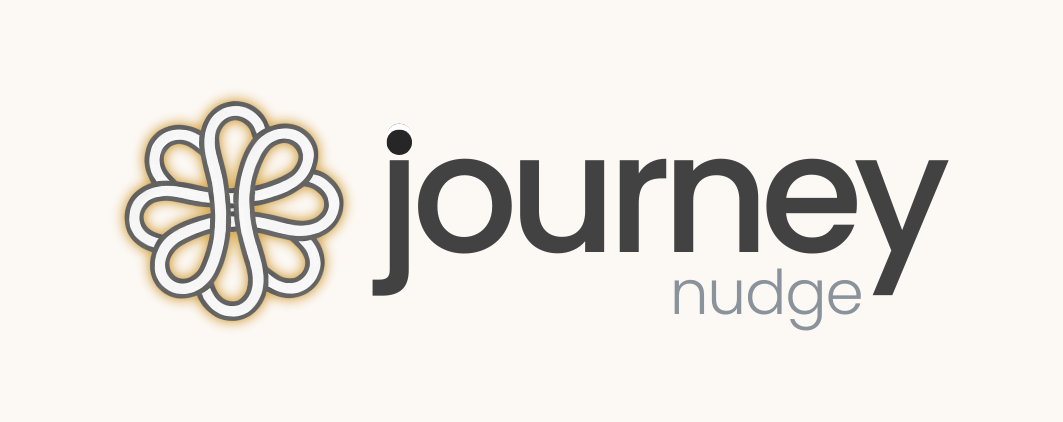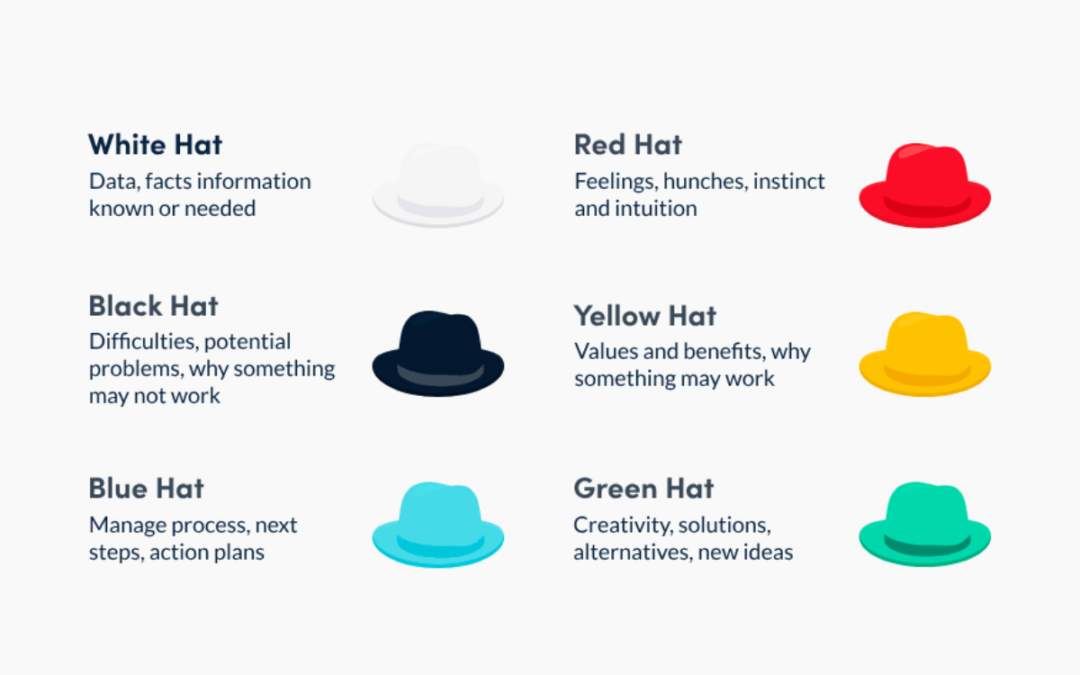Reading Time: 6 minutes
Key Points
- The Six Thinking Hats method offers a multifaceted lens for decision-making.
- Developed by Edward de Bono, it ensures all perspectives are considered.
- Each “hat” or perspective can be used individually or within group discussions.
The Six Thinking Hats
In the world of decision-making, the importance of comprehensive analysis cannot be overstated. The ‘Six Thinking Hats’ method, innovated by Edward de Bono, furnishes a systematic approach to view decisions from multiple angles. Whether you’re contemplating alone or brainstorming in a team, this tool ensures every vital perspective is given its due consideration.
Deciphering the Six Thinking Hats
Each hat symbolizes a unique perspective. By “donning” each hat, one can explore varied facets of a decision:
- 🟡 Yellow Hat (Optimism): Focus on the positives. Unearth the potential benefits and opportunities.
- 🟢 Green Hat (Creativity): Let imagination reign. Conceive out-of-the-box solutions. Techniques like the Productive Thinking Model or First Principles might augment this process.
- 🔴 Red Hat (Emotion): Tune into feelings. Understand gut reactions and predict how others might emotionally respond.
- ⚪️ White Hat (Data): Be objective. Dive into data, analyze trends, and derive conclusions based on hard facts.
- ⚫️ Black Hat (Caution): Understand potential pitfalls. Visualize worst-case scenarios and areas of vulnerability. The principle of Inversion can be handy here.
- 🔵 Blue Hat (Process Control): Steer the discussion or thinking process. It’s about organizing and synthesizing the inputs from all other hats.
A Glimpse in Action:
Imagine a management team deliberating the launch of a new product to combat dwindling sales. Using the Six Thinking Hats:
-
🟡 Yellow Hat: The team identifies a potential market segment for the new product.
-
⚫️ Black Hat: Concerns arise about the new product overshadowing existing ones or not bringing enough value to the table.
-
⚪️ White Hat: Data suggests there are unaddressed market needs and indicates a shift in consumer preferences.
-
🟢 Green Hat: Ideas flow about prototyping and testing the product’s value.
-
🔵 Blue Hat: A decision is made to validate the product with consumers before a final decision.
-
🔴 Red Hat: The team collectively feels this approach will mitigate risks, and there’s a consensus on the way forward.
Practical Exercise
Reflect on a Past Decision: Apply the Six Thinking Hats retrospectively on a past decision. What insights emerge from each perspective? Would the outcome have been different with this comprehensive analysis?
Incorporate in Group Discussions: The next time you’re in a group setting, assign different hats to team members. After a round of discussion, rotate the hats. Observe the richness and diversity of the discussion.
Personal Journaling: When faced with personal decisions, journal your thoughts under each hat. This ensures a rounded introspection.
Ask Yourself:
- Which “hat” do I naturally lean towards in decision-making?
- Are there decisions where I might have benefited from a more comprehensive analysis?
- How can I make the Six Thinking Hats a habitual part of my decision-making process?
Insight: Understanding and analyzing decisions from multiple perspectives isn’t just strategic; it’s about ensuring every decision is well-rounded and resilient. The Six Thinking Hats method is more than just a tool; it’s a compass that navigates you through the intricacies of choices, ensuring every voice, data point, and intuition has its say.
Tiny Nudge: Next time you’re at the crossroads of a decision, remember that every hat you wear illuminates a new path. Embrace the diversity of perspectives to find the most informed way forward.
Embracing the ‘Six Thinking Hats’ is akin to arming oneself with a multi-faceted lens to scrutinize decisions. By understanding, adopting, and weaving these perspectives into our decision-making fabric, we pave the way for more informed, resilient, and comprehensive outcomes.
Further Reading: For those keen on delving deeper, Edward de Bono’s book, “Six Thinking Hats,” remains the authoritative guide on this transformative method.

